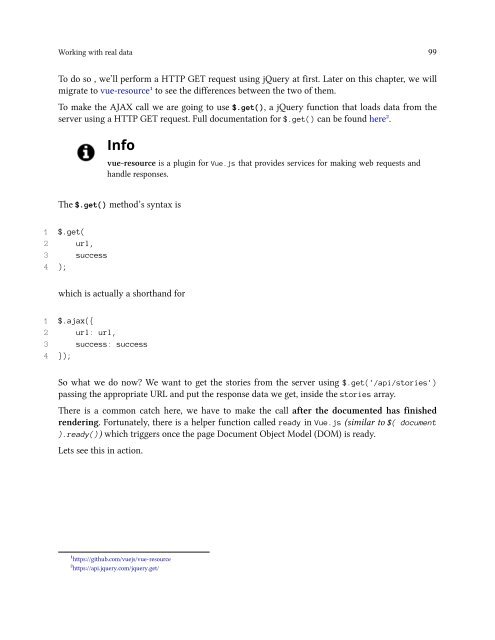vuejs
You also want an ePaper? Increase the reach of your titles
YUMPU automatically turns print PDFs into web optimized ePapers that Google loves.
Working with real data 99<br />
To do so , we’ll perform a HTTP GET request using jQuery at first. Later on this chapter, we will<br />
migrate to vue-resource¹ to see the differences between the two of them.<br />
To make the AJAX call we are going to use $.get(), a jQuery function that loads data from the<br />
server using a HTTP GET request. Full documentation for $.get() can be found here².<br />
Info<br />
vue-resource is a plugin for Vue.js that provides services for making web requests and<br />
handle responses.<br />
The $.get() method’s syntax is<br />
1 $.get(<br />
2 url,<br />
3 success<br />
4 );<br />
which is actually a shorthand for<br />
1 $.ajax({<br />
2 url: url,<br />
3 success: success<br />
4 });<br />
So what we do now? We want to get the stories from the server using $.get('/api/stories')<br />
passing the appropriate URL and put the response data we get, inside the stories array.<br />
There is a common catch here, we have to make the call after the documented has finished<br />
rendering. Fortunately, there is a helper function called ready in Vue.js (similar to $( document<br />
).ready()) which triggers once the page Document Object Model (DOM) is ready.<br />
Lets see this in action.<br />
¹https://github.com/<strong>vuejs</strong>/vue-resource<br />
²https://api.jquery.com/jquery.get/


